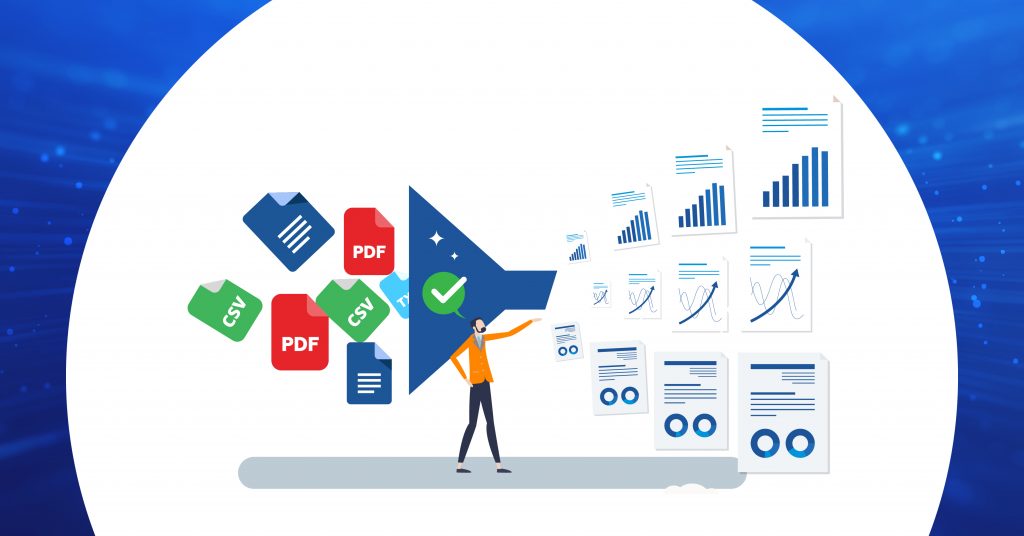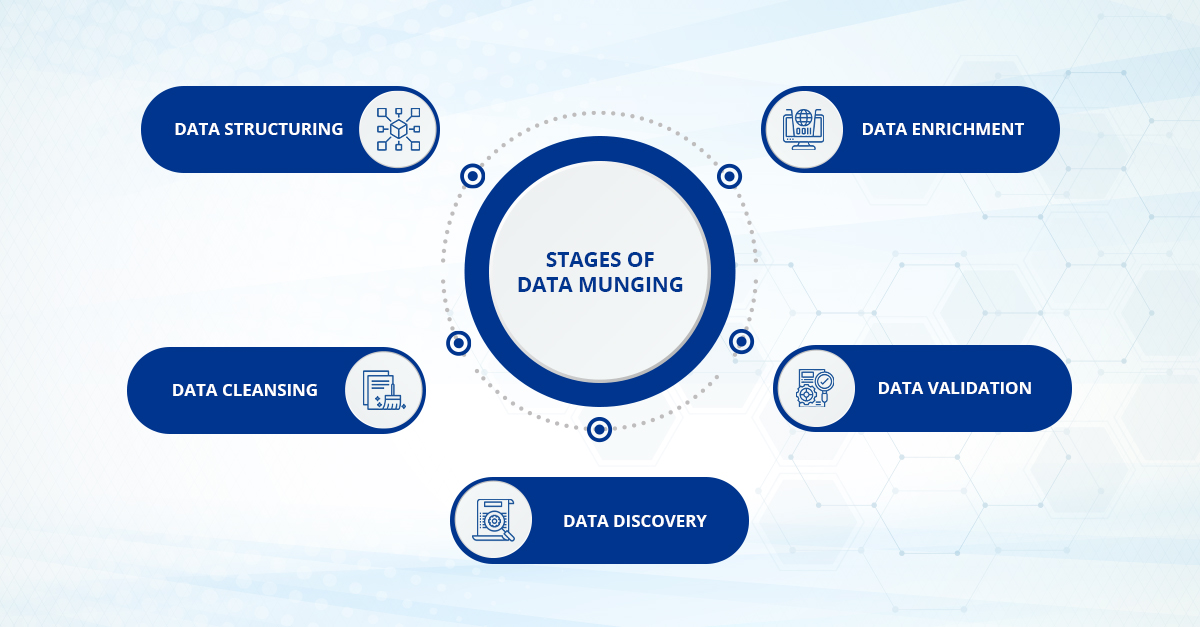
What is Data Munging and Why is it Important? A Complete Guide
What is Data Munging?
Data munging is the process of preparing raw data for reporting and analysis. It incorporates all the stages prior to analysis, including data structuring, cleaning, enrichment, and validation. The process also involves data transformation, such as normalizing datasets to create one-to-many mappings. It is also known as data wrangling.

Why is Data Munging Important?
Businesses evolve over time, and so do data management challenges. Data munging plays a crucial role in tackling these challenges, making raw data usable for BI. There are several reasons why has become a common practice among modern enterprises.
For starters, businesses receive data from different sources and systems. It can be hard to bring together all the data contained in these disparate sources. Data munging helps break these data silos and enables organizations to gather data into a centralized repository and understand the business context of information.
During the data munging process, the data is cleansed, transformed, and validated to maximize accuracy, relevance, and quality. As a result, the data is accurate, up-to-date, and relevant and show a complete picture to decision-makers.

Different Stages of Data Munging
Data Discovery
Everything begins with a defined goal, and the data analysis journey isn’t an exception. Data discovery is the first stage of data munging, where data analysts define data’s purpose and how to achieve it through data analytics. The goal is to identify the potential uses and requirements of data.
At the discovery stage, the focus is more on business requirements related to data rather than technical specifications. For instance, data analysts focus on what key performance indicators or metrics will be helpful to improve the sales cycle instead of how to get the relevant numbers for analytics.
Data Structuring
Once the requirements are identified and outlined, the next stage is structuring raw data to make it machine-readable. Structured data has a well-defined schema and follows a consistent layout. Think of data neatly organized in rows and columns available in spreadsheets and relational databases.
The process involves carefully extracting data from various sources, including structured and unstructured business documents. The captured data sets are organized into a formatted repository, so they are machine-readable and can be manipulated in the subsequent phases.
Data Cleansing
Once the data is organized into a standardized format, the next step is data cleansing. This stage addresses a range of data quality issues, ranging from missing values to duplicate datasets. The process involves detecting and correcting this erroneous data to avoid information gaps.
Data cleansing lays the foundation for accurate and efficient data analysis. Several transformations — like Remove, Replace, Find and Replace, etc. — are applied to eliminate redundant text and null values as well as identify missing fields, misplaced entries, and typing errors that can distort the analysis.
Data Enrichment
The structured and cleansed data is now ready for enrichment. It’s a process that involves appending one or multiple data sets from different sources to generate a holistic view of information. As a result, the data becomes more useful for reporting and analytics.
It typically involves aggregating multiple data sources. For instance, if an order ID is found within a system, a user can match that order ID against a different database to obtain further details like the account name, account balance, buying history, credit limit, etc. This additional data “enriches” the original ID with greater context.
Data Validation
Validating the accuracy, completeness, and reliability of data is imperative to the data munging process. There’s always a risk of data inaccuracies during the data transformation and enrichment process; hence a final check is necessary to validate the output information is accurate and reliable.
Data validation contrasts with data cleansing in that it rejects any data that don’t comply with pre-defined rules or constraints. also checks for the correctness and meaningfulness of the information.
There are different types of validation checks; here are some examples:
- Consistency check: the date of an invoice can be restricted from preceding its order date.
- Data-type validation: the date and month field can only contain integers from 1 to 31 and 1 to 12, respectively.
- Range and constraint validation: the password field must comprise of at least eight characters, including uppercase letters, lowercase letters, and numeric digits.
Benefits of Data Munging
Automated data solutions are used by enterprises to seamlessly perform data munging activities, i.e., cleanse and transform source data into standardized information for cross-data set analytics. There are numerous benefits of data munging. It helps businesses:
- eliminate data siloes and integrate various sources (like relational databases, web servers, etc.).
- improve data usability by transforming raw data into compatible, machine-readable information for business systems.
- process large volumes of data to get valuable insights for business analytics.
- ensure high data quality to make strategic decisions with greater confidence.
How is Data Munging Different from ETL?
While ETL deals with structured or semi-structured relational data sets, data munging involves transforming complex data sets, including unstructured data that doesn’t have a pre-defined schema. In contrast to ETL’s reporting use case, data wrangling’s primarily objective is exploratory analysis, i.e., new ways to look at data to add value and produce business insights.
Challenges of Data Munging
Data munging present various obstacles to organizations. For starters, data comes from multiple sources and must be fed into different destinations, so it’s crucial to have a solution that has as many connectors as possible.
Furthermore, using open-source libraries — for instance, Pandas — can be a time-intensive activity. Data analysts need a large number of pre-programmed transformations to handle the everyday data munging activities efficiently.
Modern data analysts prioritize no-code data extraction and management solutions because they enable them to maximize productivity and manage the data munging phases more seamlessly.
Managing large data volumes is also a big challenge as the data processing time is correlated to the size of data. Data extraction from unstructured documents often consumes a lot of time and bottlenecks the data wrangling process.
The Need for Automation
Data scientists spend a considerable amount of their time munging data. Anaconda survey suggests that only data loading and cleansing takes approximately 45 percent of their time. Modern businesses realize that their resources spend half of the time doing the tedious data preparation work (data janitor work, as some might say) and look for ways to automate the data munging process.
Automated solutions allow enterprises to address the data management bottlenecks, so rather than spending time on data wrangling, data analysts can spend more time on using the refined information for reporting and analytics. Modern data management solutions minimize the time lag between raw data and analytics and facilitate data-driven decision-making.
Astera — Your First Step to Data Munging
Astera ReportMiner is an enterprise-grade data extraction solution that can automate and streamline your data munging activities. The automated, code-free platform is designed to instantly transform large volumes of unstructured data into actionable insights. As a result, you can kickstart your analytics initiative and enable data-driven decision-making.
With Astera, you can:
- Pull data from various unstructured sources like COBOL PDF, PRN, TXT, XLS, and more.
- Create report models to extract data from unstructured documents at scale for further processing.
- Design reusable templates that can be used to capture data from files with similar layouts and structures.
- Set up custom data validation rules to ensure that parsed data meets the desired format and business requirements.
- Use an extensive library of 100+ built-in connectors to transport prepared data to the destination of your choice.
Are you interested in automating data extraction processes to turbocharge your data munging? Download a free 14-day trial of our automated data extraction solution. If you prefer to speak with a representative, call +1 888-77-ASTERA today.
What is data munging?
What is the difference between data munging and data wrangling?
What are the key stages of the data munging process?
The data munging process typically involves the following stages:
- Data Discovery: Defining the purpose of the data and identifying its potential uses and requirements.
- Data Structuring: Organizing raw data into a machine-readable format with a well-defined schema.
- Data Cleaning: Detecting and correcting errors or inconsistencies to ensure data quality.
- Data Enrichment: Enhancing data by appending additional information from various sources to provide a holistic view.
- Data Validation: Verifying the accuracy, completeness, and reliability of the data to ensure it meets predefined rules and constraints.
How does data munging differ from ETL?
What challenges are associated with data munging?
Data munging presents several challenges, including:
- Data Variety: Integrating data from multiple sources requires a solution with numerous connectors.
- Time-Consuming Processes: Using open-source libraries can be time-intensive, necessitating a large number of pre-programmed transformations.
- Managing Large Data Volumes: Processing large datasets can lead to bottlenecks, especially when extracting data from unstructured documents.
 Astera AI Agent Builder - First Look Coming Soon!
Astera AI Agent Builder - First Look Coming Soon!


